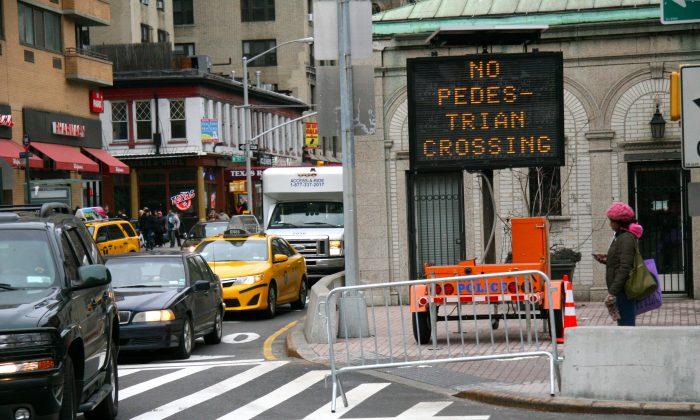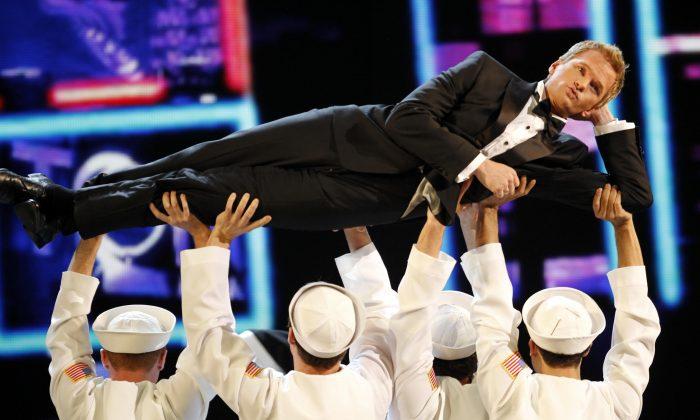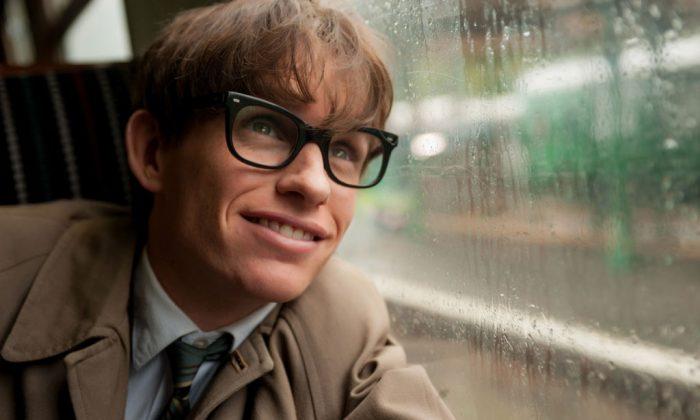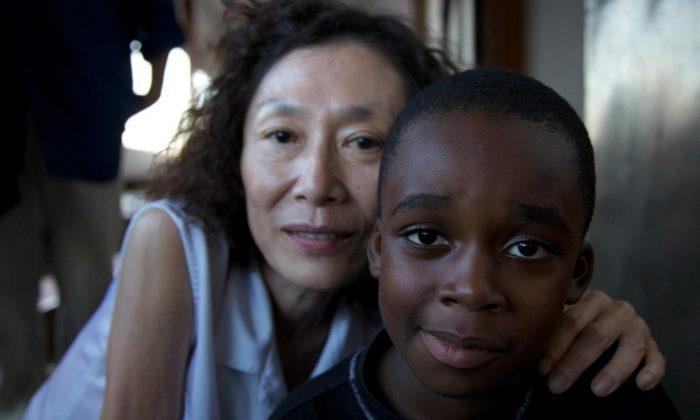NEW YORK—Pedestrians rush across six possible crossing points at the 96th and Broadway intersection where hundreds of commercial trucks and passenger vehicles crisscross every hour. A sign outside of the subway entrance warns of no pedestrian crossing, and vehicle lanes are distinguished by a confusing series of turn signals, with a hill that could partially block a driver’s line of sight.
This intersection has been especially deadly for pedestrians recently.
After a 26-year-old woman was struck and killed at 96th Street and Broadway Sunday, the local police precinct stepped up pedestrian and traffic control.
The woman’s death, a young doctor by the name of Samantha Lee, was the third traffic-related fatality in a two-block radius in nine days.
An elderly resident with a walker, Grace Crosdale, lives at 95th and Columbus Avenue and has been avoiding the intersection for years.
“This has always been a bad crossing,” Crosdale said. She thinks there needs to be more policemen in the area.
Local resident Cathy, who didn’t want to give her last name, has lived in the area for over 40 years at 98th and Broadway. She said not only do the people not pay attention to the lights, but cars also break the rules.
“I don’t see any cars getting tickets … they just do what they want,” Cathy said. She added that there hadn’t been any police in the area until this past weekend. On Monday afternoon, three traffic police officers watched over pedestrians and directed traffic. They also installed a “No Pedestrian Crossing” sign.
Citywide Response
In the first few weeks of 2014, there have been 10 pedestrian fatalities in New York City, prompting Mayor Bill de Blasio to launch a major reform for safety. De Blasio has vowed that through his Vision Zero initiative he will bring pedestrian fatalities to zero in the next 10 years, partly by improving safety at the city’s most dangerous intersections.
Immediate solutions of Vision Zero were launched last week, whereby speeding tickets are issued using the city’s traffic cameras and police are assigned to direct traffic at dangerous intersections. He has also promised to reduce the speed limit to 20 mph in certain problem areas of the city.
“We won’t sit by while lives are lost and families are torn apart,” said Phil Walzak, mayoral press secretary Sunday.
“These latest crashes underscore the urgent need to make our streets safer, which is why we are moving decisively to enact Vision Zero,” he said.
Jaywalking Crackdown
Though Vision Zero has no specific measures for curbing jaywalking, NYPD Police Commissioner William Bratton did say last week that he will increase Highway Division personnel by 50 percent. The division enforces serious traffic violations, and Bratton aims to have a total of 270 officers assigned to do the job.
But not only should policing be improved in the area, there should also be stricter punishments for reckless driving, said Manhattan organizer at Transportation Alternatives, Thomas DeVito.
“New York and the NYPD have not been particularly aggressive in pursuing cases against drivers in these incidents,” he said.
DeVito spent almost a year studying and writing about problematic traffic grids in Manhattan.
“There’s a lot of conflicts as far as pedestrians and cars in that area,” he said about the 96th and Broadway intersection.
With a subway station popping out onto an island in the middle of Broadway, and with 96th Street climbing steeply uphill, the intersection is not only crowded, but also dangerous.
For him, it’s also the unfair battle between a two-ton steel machine and a human being.
Research supports the perception that it’s a dangerous, busy intersection that needs better signaling, lighting, and protection for pedestrians. In July 2013, Nelson Nygaard Consulting Associates issued a report highlighting the intersection as problematic.
NYPD Commissioner Visit
On Monday, Bratton showed up at the intersection bearing a sign warning pedestrians to “Stop, Look, Walk.”
He was also unapologetic about a Sunday jaywalking sting that led to the bloody arrest of an elderly man. According to New York Daily News, the man tried to evade getting a jaywalking ticket and was photographed in handcuffs with blood streaming down his left temple.
The arrest and the man’s treatment as a pedestrian caused an uproar, but Bratton defended the tactics.
“So it was a well-intended effort to try to make people just very much aware this is a dangerous location and we need your cooperation,” Bratton told the Daily News. “Unfortunately, we had the incident of the elderly gentleman.”
He added that NYPD Internal Affairs was briefed about the incident and that it will be fully investigated, as is typical with an injury during an arrest.
An NYPD representative told Epoch Times that they know nothing of a crackdown on jaywalkers by police, despite rumors to the contrary.
By Feb. 15, the NYPD, Department of Transportation, Department of Health and Mental Hygiene, and the Taxi and Limousine Commission will present a comprehensive roadmap for safer streets with long term solutions for achievement of the Vision Zero plan.





